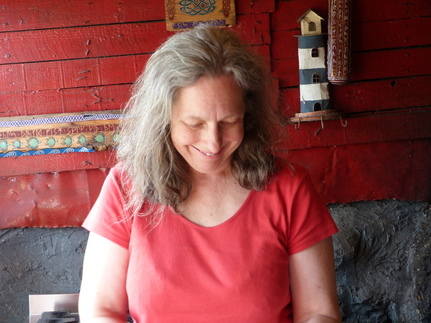THE RUNNY BUTTERNUT SQUASH SOUP - AND A RESCUE BY RICE
Posted on

Back in the autumn, I acquired two very large, bullet-hard butternut squashes from a fellow craft market trader. I decided to make them into soup, so spent a good hour peeling, deseeding and chopping them up. Into a large saucepan they went, with almost enough water to cover, and they were cooked until tender.
The mistake was to not drain them before blitzing. It didn’t look like that much water, and I was keen to flavour the soup with some excellent chicken stock nicely jellied in the fridge. In that went too, along with allspice, nutmeg and cinnamon, salt and black pepper and a skoosh of double cream. Great flavour, lovely silky texture – but hopelessly thin. Disappointedly, I boxed it, consigned it to the freezer, and avoided dealing with it until the other day.
Reluctant to chuck out something with such good ingredients, and which took some work to generate, I thawed it out over two days, then transferred it to a pan and reheated it very gently, wondering how I could make something of it. It was still very thin, although the aroma coming off it was seductive. I didn’t want to use flour as a thickener as it would wreck the silky texture which is half the fun of eating it. Mashed potato would do the same.
Put some rice in, my husband suggested from behind his fly tying vice.
I hadn’t thought of rice. I put a handful in, stirred it and went away, not convinced it would do the trick. But it did. After about an hour, the starch had come out of the rice and thickened the soup just enough; the flavour was still really good and the texture was intact.
All it needs is some homemade bread, and optional grated cheese.
If you decide to have a go, remember to drain the squash of its cooking liquid before adding the chicken stock.